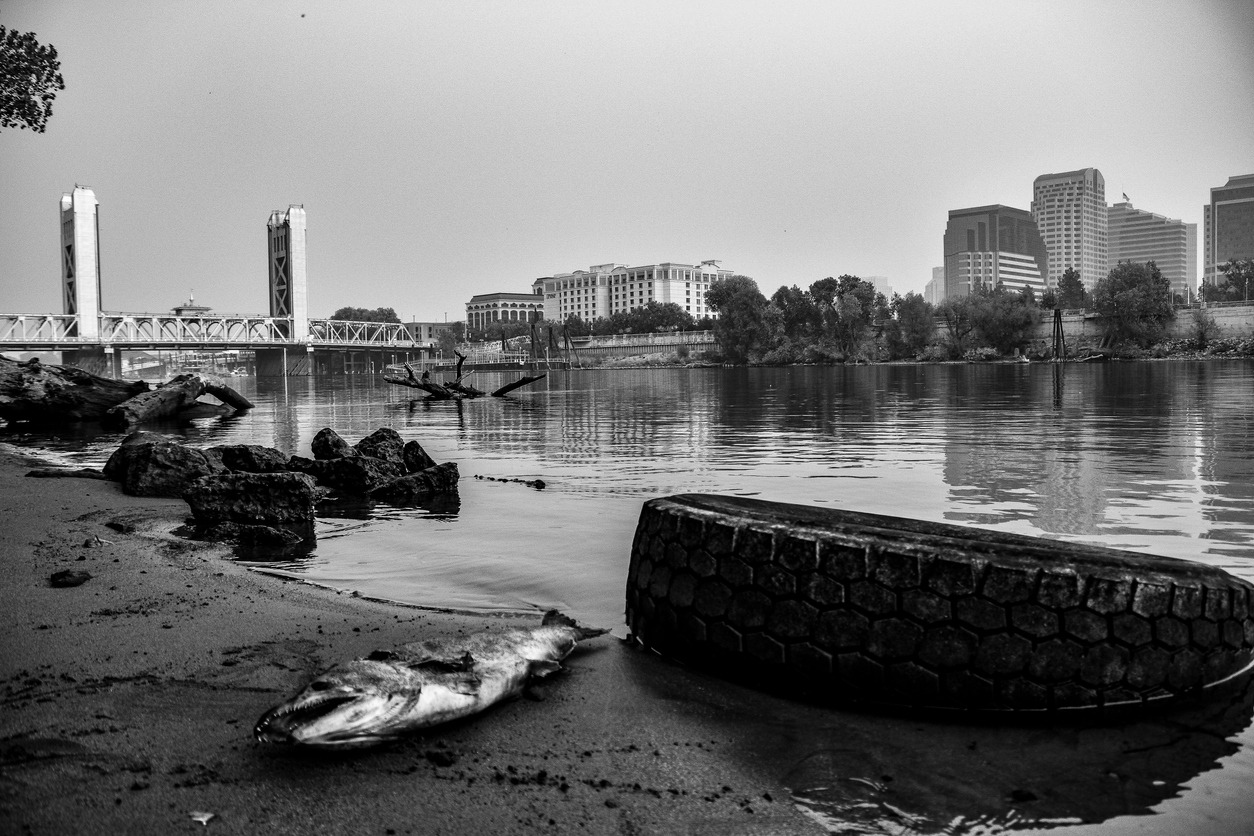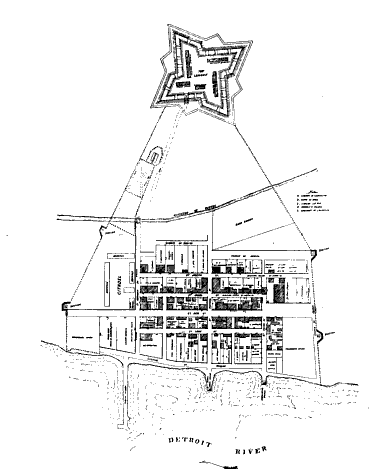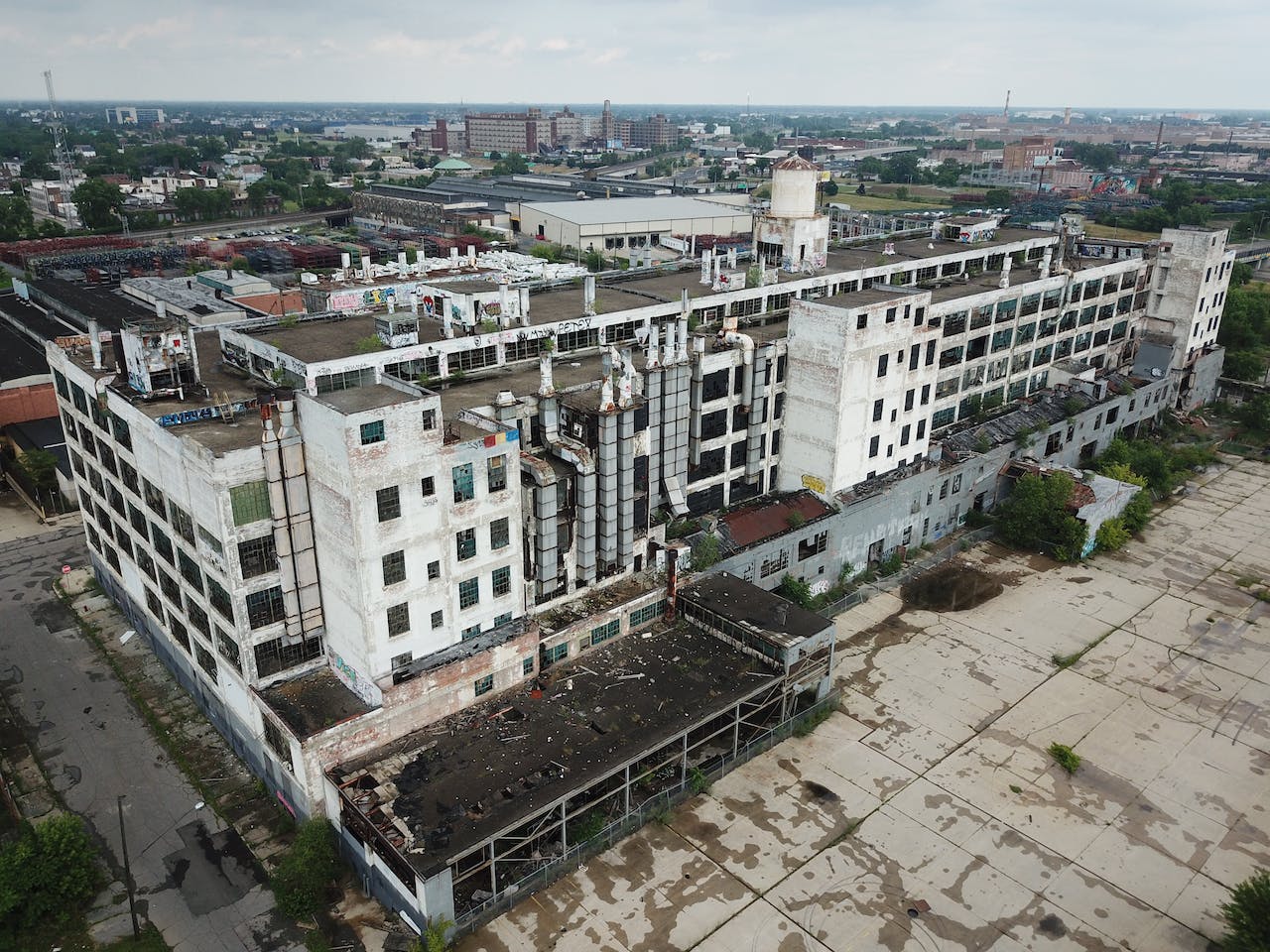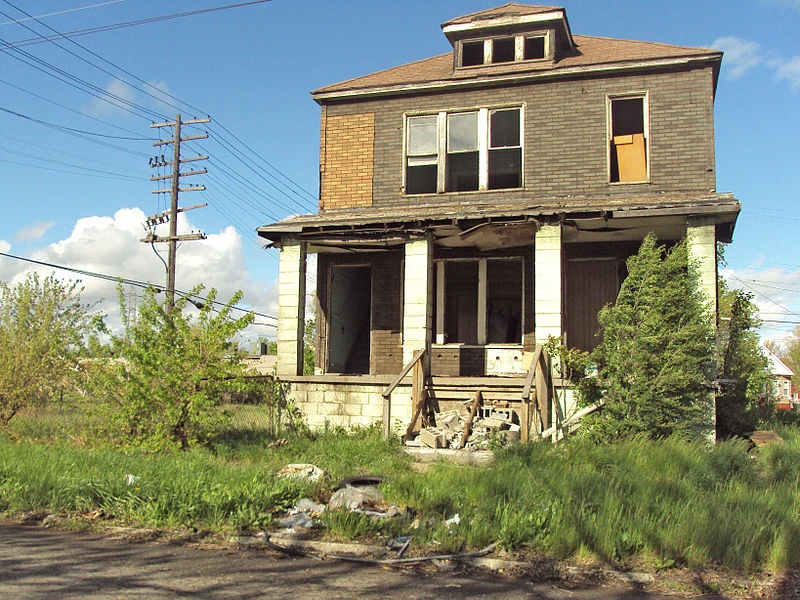As of July 18, 2013, the Motor City officially ran out of gas. Filing for for Chapter 9 bankruptcy, Detroit’s debts–a whopping $18 to $20 billion–represent the largest municipal filing for bankruptcy in United States history. And as its solvency has gone down the drain, so too has its population. In 1950, the burgeoning industrial city was home to nearly two million Americans. But today, as Detroit’s population has dwindled to a mere 700,000, the only boom Detroit has seen rests in the number of abandoned buildings popping up within city limits.
French colonists founded Detroit, the biggest city in the state of Michigan, in 1701. It is the first European settlement in North America to be located above low tide. It was first established as a New France fur trade port, but as Americans started to settle around the Great Lakes in the 19th century, it started to grow. It was the fourth-largest city in the United States by 1920 and a global industrial powerhouse thanks to the booming auto industry and immigration. Until the middle of the 20th century, it retained that status.
It was formerly a bustling industrial hub well-known for its vehicle manufacture, but in recent years it has collapsed because of job losses, suburban migration, an increase in crime, and poverty. Despite this, there have been initiatives to rehabilitate the city, and there is optimism for Detroit and its citizens’ better future.
As evidenced by the following photos of an abandoned Detroit, those remaining might have a hard time forging optimism about the future when constantly surrounded by brick laid ghosts.
Did you know?
- After automotive decentralization, Detroit’s heavily automobile-centric industrial landscape, developed in the first half of the 20th century, caused rapid declines in population and economic output.
- Detroit’s population fell by 61.4 percent between 1950 and 2010, dropping it from the fourth to the twenty-seventh most populated city in the US.
- Out of a total of 139 square miles, Detroit had 40 square miles of undeveloped land in 2012. This indicates that in 2012, Detroit’s total land area was vacant to some extent.
- In Detroit, foreclosures occurred on one in three properties between 2005 and 2015.
- According to Detroit’s current land use, the neighborhoods just to the northwest along Grand River Ave. and to the northeast at the end of Gratiot Ave. tend to have higher neighborhood vacancy rates than the rest of the city.
- Residents of color are more prevalent in areas with lower population densities.
- Detroit has a high rate of demolition, which is typical of shrinking cities, but there is new construction activity in the downtown area and some nearby neighborhoods, such as Corktown and Midtown. Additionally, there are a few isolated areas of new construction in the city’s northwest, close to Henry Ford Hospital, and in the North End neighborhood.
- To address Detroit’s land use issues, city planners have recently begun introducing initiatives. By connecting different neighborhoods with bike lanes and running trails, the Greenways Coalition is one of the largest projects aiming to increase commuters’ mobility and safety in Detroit.
- To develop new mobility technologies and create new workforce development opportunities through technical certifications, Ford and Google are working together to develop the Innovation District in Michigan Central.
- Small business alliances, like Live6 Alliance, are reviving the economy in dwindling commercial corridors through place-based urban planning.
Lee Plaza one Iconic Example
Much of the city of Detroit is a dystopian wasteland of abandoned structures. According to the White House Blight Task Force, some 80,000 buildings sit empty in the city. One of the most magnificent and eerie is the Lee Plaza, a 15-story art deco behemoth built in 1929. This residential hotel was a marvel for its time, designed so that tenants never had to leave. The Lee contained a library, a daycare, a beauty parlor, a grocer, and even a netted driving range, among other amenities. The lobby was exquisitely appointed with fine woods, marble, and beautiful frescoes.
As the fortunes of the Motor City waned, so did those of Lee Plaza. The property was too exorbitant for its own good and frequently switched hands during its history. In the late 1960s, it became a home for low-income senior citizens, but problems continued to plague the building, including the murder of one of its elderly residents. It was finally closed in 1997.
The exterior entrances and ground floor windows have been bricked up and the panes of the upper windows have all been removed, leaving the brutal Michigan winds to howl through the structure throughout the year. Vandals soon made their way inside and the ornate lobby area and ballroom have been thoroughly demolished, featuring an overturned piano, cracked marble, and derelict 1970s-era furniture. Someone even managed to strip the copper from the roof. Lee Plaza seems to be an ideal candidate for razing to the ground, but it is actually on the National Register of Historic Places.
The Rise and The Decline of Detroit
In 1920, it continued to expand and become the fourth-largest city in the United States (after New York City, Chicago, and Philadelphia). The Detroit River became the busiest commercial center in the world as it continued to industrialize; its freight flow was more than three times that of New York and almost four times that of London.
With the loss of car sector employment, fast suburbanization, and other factors, Detroit started to deteriorate in the 1940s. The city soon discovered itself in an unstoppable state of urban decay. The city’s population reached its peak in 1950 with 1.85 million residents, but by 2020, it had decreased to only 640,000.
- Peak Population: 1.85 million
- Last Census: 640,000 (2020)
- Decline: Around 65% of the population
The biggest municipal bankruptcy in US history was brought on by its decline. Today, only about a third of Detroit’s original residents are still alive. Despite numerous extensive revitalizations, the decline has persisted.
1. Racial Tensions
Racial tensions in Detroit have a long history and have contributed to the decline of the city. The city was once a center for African American activism and culture, but these conflicts have left the neighborhood divided and left the city with few resources to deal with its problems.
2. Loss of Jobs
In the 1970s and 1980s, the automobile industry faced difficulties, and as a result, many jobs in Detroit were lost. This led to widespread unemployment and a decline in the tax base of the city.
3. Migration to the Suburbs
Many city dwellers relocated to the suburbs in search of a better quality of life and safer neighborhoods as opportunities and jobs in the city declined. As a result, both the population of the city and the resources available to deal with its problems decreased.
4. Rise in Crime and Poverty
Increases in crime and poverty in the city were a result of population loss and job losses. This in turn caused additional losses in population and resource availability, starting a downward spiral.
Although the city’s overall crime rate has been declining in recent years, Detroit’s local crime rates are among the highest in the country. Detroit was the scene of almost half of all killings in the state of Michigan in 2015. It also continues to be the most dangerous city in America even though its homicide rate has been declining. With more than 2,000 violent crimes per 100,000 residents, it is the only mid or large-sized city in the USA.
Overall, a complex process of economic, social, and political factors contributed to Detroit’s decline. Despite this, initiatives are being made to rehabilitate the city and give its citizens a better future.
Conclusion
Detroit has endured a traumatizing period of unheard-of urban shrinkage over the past 60 years. Several Detroit neighborhoods have been transformed into ghost towns by vacant homes and abandoned structures. There are grounds for cautious optimism that the advantages of the recent flurry of investment might be distributed fairly.




